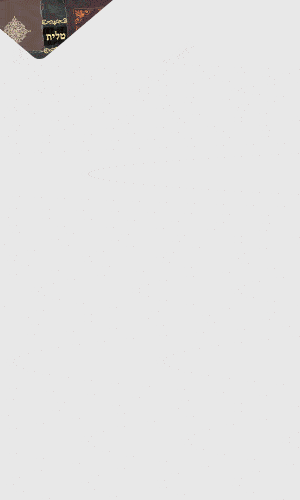Interview: Shliach to the Museum on the Stream
Daniel von Weinberger, a Lubavitcher Chassid, plays an active role in the art world in Europe. He sees himself as a shliach of the Rebbe MH”M, not only among Jewish artists, but particularly (l’havdil) among non-Jews. All this and more in this exclusive interview he granted to the Beis Moshiach • Full Interview, Photos
Daniel von Weinberger, a Lubavitcher Chassid, plays an active role in the art world in Europe. He’s a multi-media artist who is known for the lively designs he makes out of unusual materials. He also teaches jewelry and fashion design and his work is exhibited regularly around the globe. He sees himself as a shliach of the Rebbe MH”M, not only among Jewish artists, but particularly (l’havdil) among non-Jews. It is not an easy assignment and he has plenty of vexing tales to tell. All this and more in this exclusive interview he granted to the Beis Moshiach.
BM: We have learned that you made an exhibit about Jewish life for a museum in Antwerp. How did this come about?
I am both an artist and an art teacher. Since I like to keep up with the latest developments in the art world, I periodically go to museums and other exhibitions. Four years ago, a new museum opened in Antwerp, called The Museum on the Stream. More than just a generic art museum, it’s about Antwerp and its history. Its goal is to be a vibrant place where Antwerp residents and visitors develop a unique connection with the city and its people. There are exhibits about Belgian folklore, Belgian history and more.
One of the museum’s focuses is to bring different cultures together. In this vein, they have one floor dedicated to giving different religions, including Judaism, a venue to show how they relate to life in this world and the World to Come. My involvement began when I saw the Jewish display during one of my visits to the museum. I was most displeased to see only a menorah, a Pesach Seder tray, a shiva chair, and a folded tallis and kittel. This gave a most empty and lifeless expression to Jewish life! I recalled a sicha from the Rebbe MH”M when he spoke about France, during which he noted that each individual knows best what to do in his own city. This point has stayed with me throughout all these years.
I firmly believed that my shlichus was to make a vibrant, joyous celebration of Judaism in that museum. However, the curator didn’t know me, and I couldn’t just offer to change it without being asked. What would their reaction be? If the museum was happy with the current display, would I be allowed to do whatever I wanted?
As any other Chabadnik with a question, I asked my mashpia. His answer was clear and enthusiastic, “As a frum Jew and an artist, this is really something you must undertake!”
The question now was how to achieve this objective. I have a good friend who is also friends with the deputy mayor in charge of the municipal department of religion and culture. He had already given him a couple of my art books and had been trying to liaise between us. I told him about my idea and he arranged a meeting in my house with the Deputy Mayor to show him a small sample of my vision. This wasn’t as easy as it sounds. The deputy mayor had many critical responsibilities in running the city, including being in charge of the departments of finance, maintenance, and property management. As a result of his extremely busy schedule, our appointment was rescheduled several times. Finally, when he was on his way to our house, he called my friend pointing out how overburdened he was and asking him why he needed to come to me, as opposed to my coming to his office in City Hall. This was a clear sign to me that G-d Himself was supervising and blessing this exhibit as my personal shlichus. In fact, throughout the entire project, I had a strong sense that I should abide by the principle of l’chat’chilla aribber, asking straightforwardly for what I thought was necessary. When problems arose, they often faded away without explanation.
When he saw the model exhibit I had set up on our dining room table and heard my passionate plans for the project, he was very enthusiastic and immediately gave me the go-ahead.
BM: How did you choose what to put in the exhibit?
I decided to approach it from different angles. Although the name of the exhibit was Life and Death, my focus was on life.
Since we are called the People of the Book, I wanted to include a lot of s’farim, including a Torah scroll. For obvious reasons, this simply wasn’t practical. Instead, we placed a huge picture of s’farim hanging as a backdrop behind a Torah mantle about nine feet above the rest of the exhibit. Some real s’farim have been included as well. (Our contract stipulates that if the exhibit is removed, the s’farim will be returned to the community.)
I also felt that the whole installation should be based around a table. Our table is our mizbeiach. In addition, so much of our celebrating happens at the table. Pesach, Rosh Hashanah and Sukkos, Chanukah, Purim, and Shabbos are displayed on the table. To add to the dynamic atmosphere, I used films instead of pictures, which create a more static feeling.
Something else that was crucial to me was that I could present a Jewish art book as an addition to the exhibition. I wanted to show my personal view of Jewish life. Furthermore, this book would have to be on the highest art standards, as it would be sponsored by the museum and sold to a wide spectrum of people. I knew that packaging true Yiddishkait in a beautiful and professional layout is an excellent form of mivtzaim and a tremendous Kiddush Hashem. While an exhibition has an effect during its display, a book continues to make an impact long afterwards.
As curator of the exhibition, I was due a salary, however, I offered to accept the books in lieu of wages. There was a small hitch with this proposal, as such an exchange did not conform to the policies of the museum. Therefore, I made publishing the book a pre-condition for making the exhibit. Because this was what the Rebbe MH”M wanted, eventually it all worked out, and they gave me carte blanche for everything.
A major concern was how to present this to an audience completely unfamiliar with Judaism. To deal with this matter, I asked a non-Jewish journalist who has a poetic prose style to write descriptions of the items on exhibit. She spent many hours with my wife and me, learning about each item. She describes, in her own words, our way of serving G-d, the holidays, the role of women, and other Jewish topics as she interpreted them. Her descriptions of each aspect of the exhibit are on display, and her writings have been collected in a separate booklet as well. Everything appears in Flemish, the language of Antwerp, as well as in French and English. This represents an additional level in creating a dwelling place for Hashem in this world – the transmission of this holiness through the intellect of a non-Jew in Flemish, and later translated into other languages. She was so affected by what she learned with us that she asked permission to have her impressions included in the booklet. The proof of the success of our combined efforts can be summed up in the comment of a reader: “It’s written with so much respect. When you’ve finished reading it you want to become a Jew.”
The museum paid for everything connected with the permanent exhibit. All of my ideas were accepted and given full support by the director. The museum staff provided all necessary assistance, from electrical work to buying Purim graggers at the local Jewish store.
When the Rebbe MH’M wants something, you’re like a pawn in a chess match and everything works itself out.
BM: Please describe how the exhibit looks.
It’s an assortment of light, color, movement, and warmth. Each holiday is set up like a still life, as a painter would paint it, on a huge semi-circle table.
For Chanukah, I used eight kinds of menorahs. The first one, resembling eight clay pots in a row, has one lamp lit; the one behind it is a designer model with two lights. Each additional menorah has more lights, until the final one, the Rambam menorah in the back, has all eight lights kindled. I wanted the menorahs and candles to be actually lit, so the museum came up with a very creative way to solve this problem. They hollowed out the middle of the candles and passed the wiring all the way down through their center, then through the menorahs and under the table. The lights were small flame-like lamps. The cups for the menorahs using oil were filled with resin and the wiring passed through them. At the opening of the exhibit, people could be heard wondering how the museum was going to deal with all the fire – that’s how real the flames look. Beside the menorahs are dreidels and a pushka. At the back of the table are videos. There is also a video showing several menorah lightings throughout the world, including the one which had taken place that year in front of the museum itself.
The Purim exhibit contains a copy of the Megilla, colorful graggers, a pushka with play money, masks, a picture of hamantashen, empty wine and liquor bottles, glasses laying on their side with confetti strewn all over. There is also a picture of the Rebbe MH”M holding a Megilla. In the background there is a slideshow of my children wearing golden, Persian-like Purim costumes I once made for them.
The Sukkos section has a very real looking esrog (sold as a Havdalah candle) along with the rest of the Dalet Minim, which I made, leaf by leaf, from polymer clay. There are three lit candles and a picture of the Rebbe MH”M holding his lulav and esrog. The accompanying video shows Chabad Chassidim in 770 on Hoshana Rabba.
The next display is on Avodas Hashem (Divine Service). It is highlighted by a beautiful layout of a tallis, t’fillin, and a gartel together with a Chumash, T’hillim and Tanya. There is also a pushka with play money, a siddur open to the Alef-Beis page and a small imitation Seifer Torah. The background has a slideshow of pictures of me putting on my tallis and t’fillin – to show in an appealing way how these ritual articles, unknown to most people, are used on a daily basis.
The Rosh Hashanah section contains a striking long shofar with pictures of a fish head and an open pomegranate. The finishing touch is a photo of the Rebbe MH”M holding his Seifer Torah.
Completing the exhibit is Pesach. There is a multi-level Seder tray with matzos (photos on heavy paper), the Seder plate symbols made from polymer clay, a beautiful wine decanter, the four cups, and an outsized golden goblet for Eliyahu HaNavi. There are also three lit candles, three (varnished) shmura matzos, and different kinds of Hagados opened to various sections. The museum made the cups appear as if they are filled with wine by placing a wine colored film inside each one.
Each still-life has its own unique area, yet one flows gently into the next. Shabbos is front and center. While the table is covered with an off-white tablecloth, I laid a small square white Shabbos-styled tablecloth over it. I then put on it a challah board with challos made from paper mache and an authentic old challah cover. The display is surrounded by three lit candles on a tray, a cup for Kiddush with an old (empty) bottle of wine, and a pushka with imitation money. There is also a unique salt cellar made by one of my students out of titanium and sea shell, with the words “Yechi Adoneinu” carved out. The final touch is a Havdalah set with an accompanying video about women and girls lighting Shabbos candles throughout the centuries.
Surrounding the bottom edge of the table are explanatory texts on each part of the exhibition displayed in glass cases. Since museum exhibits are often protected by glass, I felt that this created a museum–like feeling of respect for these Torah concepts, while making them part of the whole arrangement. In contrast, the exhibit itself is completely visible and exposed, revealing true life.
This festive table of life and illumination is flanked on both sides by what appears to be tall black tombstones. Numerous lit memorial candles stand at the foot of each one, made to look as if it has been burning for a while. Inscribed in white letters on each of these stones is a story. One story is called A Butterfly and Divine Providence. The other is a chassidic story from the Ruzhiner Rebbe. The theme of both of these is that our souls come to this world with a purpose and that our lives continue after death.
BM: It appears that you incorporated a ton of information on this table.
Have you ever seen a drawing of Mattan Torah? Try to visualize the triangle shape of Mt. Sinai. Start at the bottom, where the Jewish People are standing in a circle around the mountain. This is the place for the glass text boxes. As you look up, you see the festive illuminated table. Looking higher, you come to the film background. At the peak is the Torah scroll hanging at the highest central point against the backdrop of s’farim.
BM: Let’s talk about your book. Why was a book so important? There is obviously already so much to see in the exhibit.
I had two reasons. You can only show so much in an exhibition. A book gives more of an opening to explore deeper layers of Jewish life.
In addition, by its very nature, this exhibit had to take into account the different Jewish traditions. However, I also wanted to create my own personal image of Judaism, of survival, of life and death, of Moshiach and the World to Come. It was never my intention to try to cover all of Judaism; I intended to craft a vibrant, expressive bubble of how I experience it. In my introduction, the only part of the book I actually wrote, it says, “The purpose of Judaism (for the whole of creation) is to make a dwelling place for G-d on earth so that there will be peace in this world and throughout the universe. This is what motivated me to put together this book.”
Besides the obvious importance of the contents, I wanted it to have a very high-quality and professional look. The cover has a black velvety finish and is inlaid with copper lettering. The pages are black with white writing, giving an elegant touch. Every page of text contains a photo or drawing. It’s a Jewish picture book for adults – profound concepts alongside contemporary, attractive art work.
Another vital factor was language. I wanted it in Flemish. Since there isn’t anything comparable in this language, using it to help create “a dwelling place for G-d in the lower realms” was essential. However, in order to reach a wider public, English was also necessary. As a result, both languages are included, although not all the content has been translated.
The inside cover pages are repeatedly lined with Yechi Adoneinu Moreinu V’Rabbeinu Melech HaMoshiach L’olam Va’ed in Hebrew, creating an attractive pattern.
The book has ten chapters:
G-d: The chapter begins with a letter from the Rebbe MH”M, an answer to college students who asked the Rebbe for 100% scientific proof that G-d exists. My intention was to try to make G-d a reality for the readers.
Tanya: The beginning portions of the three first chapters of Shaar HaYichud V’HaEmuna in English and Flemish. Everyone needs to know that G-d created the world, and non-Jews are not only allowed, but supposed, to learn this part of Tanya.
Story: This chapter was included because miraculous tales and inspiring narratives are an important part of our culture.
Food: A lighter chapter on the history of gefilte fish, Rosh Hashanah traditions, recipes and customs of challah, horseradish, hamantashen and other Jewish foods. The pictures of food are trendy and well suited for the art genre. Imagine a chic gefilte fish head!
Simcha: This chapter has Jewish jokes and lots of pictures of happy people, young and old.
Talmud: Returning to more serious topics, the next section is not as its title indicates. I wanted to show the importance of women in Jewish life, so I chose the section in Tractate Megilla about the female prophetesses: Sarah, Miriam, Devorah, Chana, Avigail, Chulda and Esther. I worked hard to make an authentic looking Gemara layout. These are translated into English and Flemish.
Esther: I had a gut feeling that I should include something about Esther and Purim because of what the Rebbe MH”M said about Batzra and the world situation today. I translated the whole Megilla into Flemish and added my own drawings portraying the different scenes. The chapter also contains a portion of a book written by my cousin, Naomi, about her mother, Eszter a”h. When Naomi was still an infant, her mother gave her to a friend who took her for a walk in her carriage. A woman came to walk with them, and both of the women held the carriage together. A while later, Eszter’s friend let go and the other woman continued walking away with the carriage. This is how Eszter a”h saved her baby daughter’s life, as Eszter was murdered in a concentration camp not long afterwards. She is, because of her profound self-sacrifice, for me, a modern day Esther.
Rebbe: This chapter is about the topic of the Rebbe being Moshiach. I put in the Rambam’s Hilchos Melachim, along with Yechezkel’s vision of the Merkava. In addition, I put in an article explaining how, according to the Rebbe’s directives, we are obligated to spread Moshiach in a manner that will be accepted.
Novelties: The point of this section was to show some of the innovations that the Rebbe MH”M made. I included the square luchos, Shir HaMaalos, the shape of the menorah branches according to the Rambam, and young girls lighting Shabbos candles.
Matza: This chapter was an instruction from my mashpia. He said that the book should also include something about the Exodus from Egypt, especially emphasizing that we all need to go out of our boundaries every day. I learn a letter from the Rebbe every day, and by Divine Providence, the letter I read the day after he gave me this instruction was on this very subject. This letter is printed on the last page in the book.
Putting this all in perspective, this museum aims to bring together all sorts of people. But the fact that a religious Jew was invited and given free rein cannot be underestimated. The museum willingly and happily offered to communicate true Torah Judaism. Compare this to a few short years ago when the Jews were being taken away in cattle cars to be gassed. Today, thank G-d, the soldiers we see on the streets are here to protect us.
I will illustrate one last point with a story. When I mentioned to one of my friends that I put together this exhibition, he was delighted. He told me that he had written a letter to the museum a long time ago asking them to work on the Jewish exhibit because the quality was so abysmal. I answered him, “The deed is the main thing.”
We can’t just wait for the hisgalus of the Rebbe MH”M. We have to bring it – each one in his and her own inimitable way.
Before



After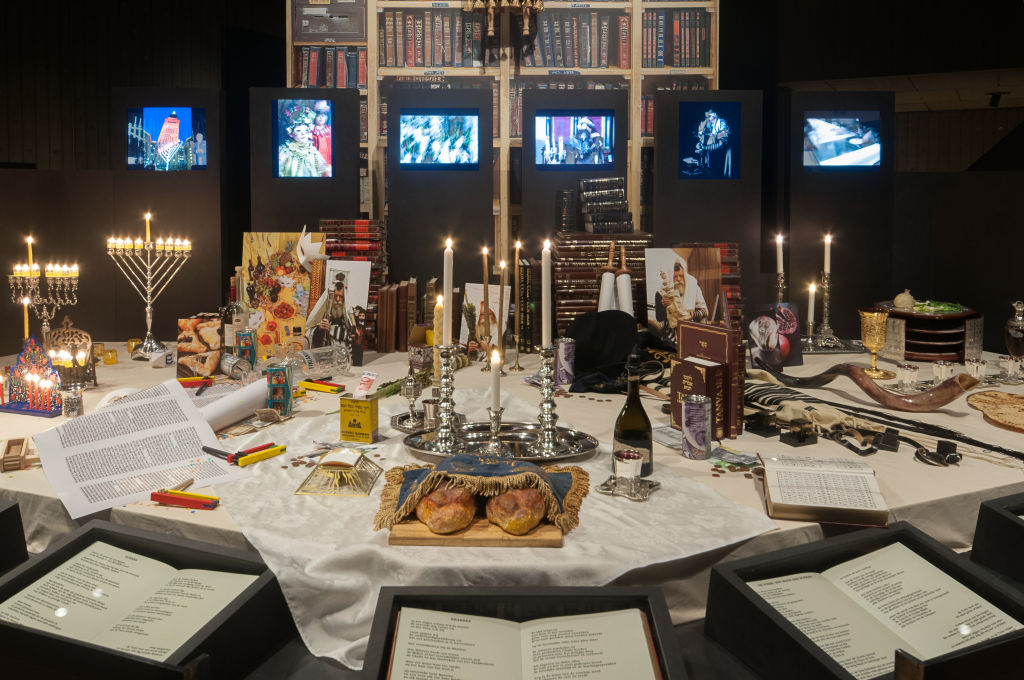


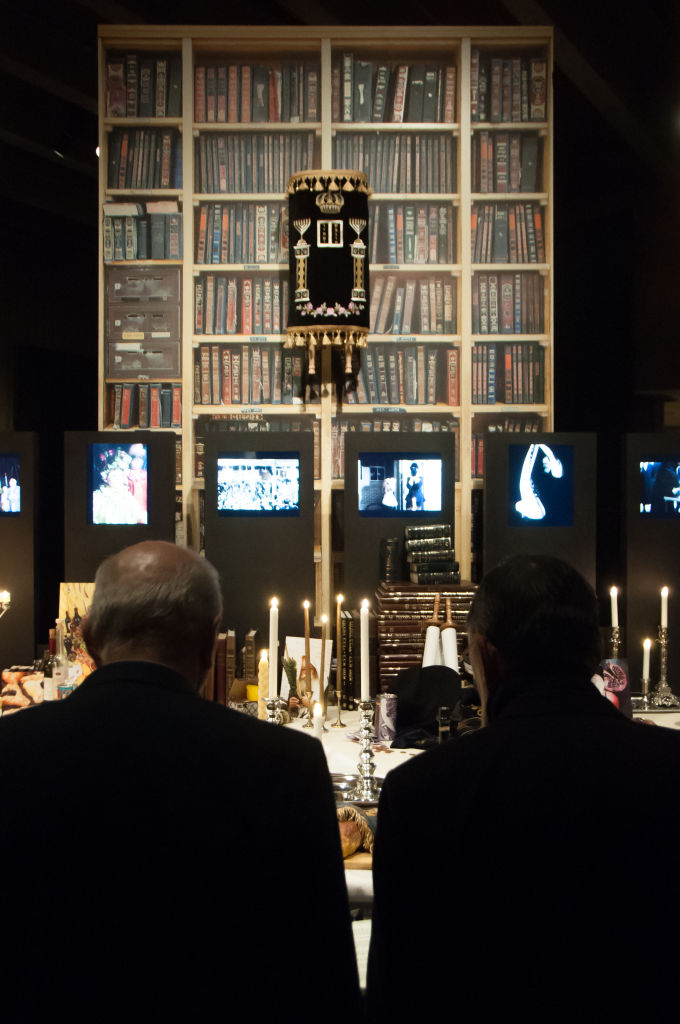





Minister of Culture asking Von Weinberger for his autograph on his new book 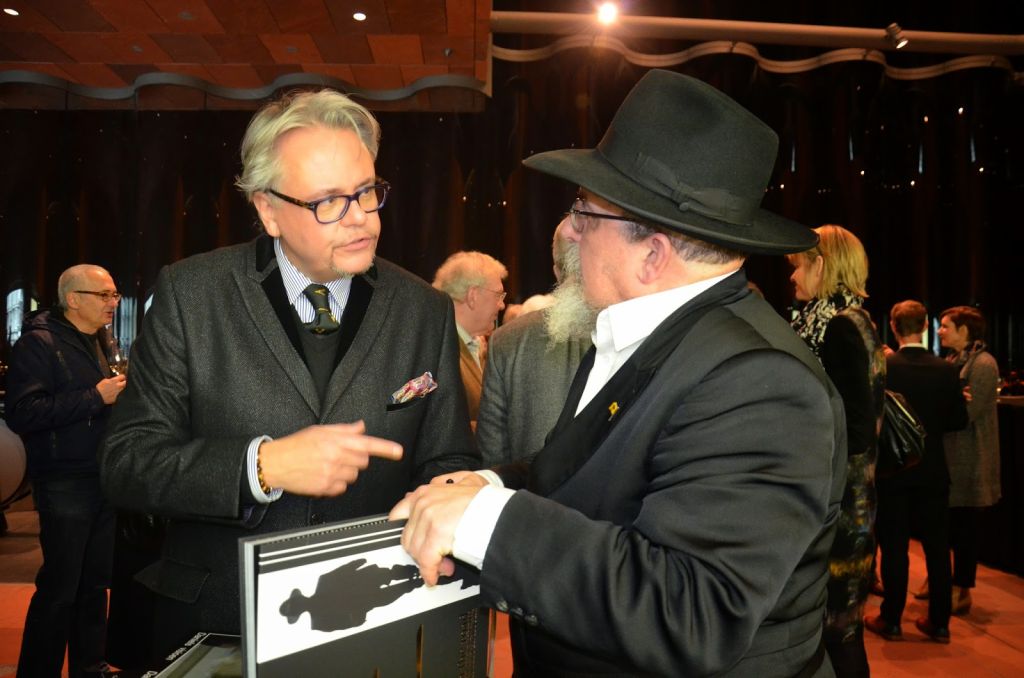


On the right Minister of Culture posing with Von Weinberger 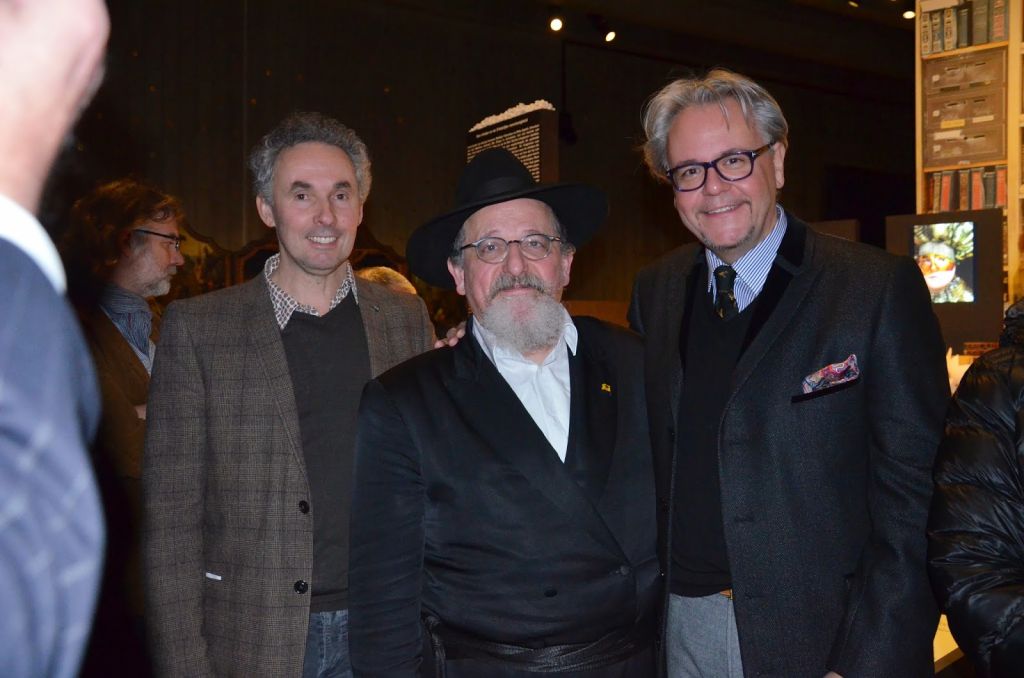


370
Join ChabadInfo's News Roundup and alerts for the HOTTEST Chabad news and updates!





















